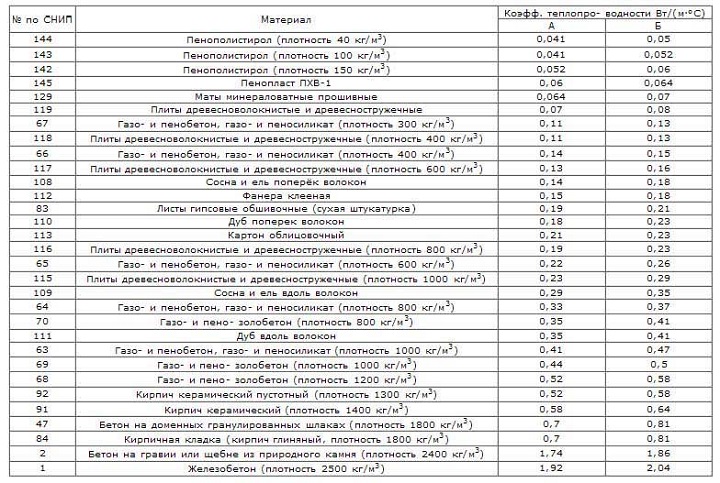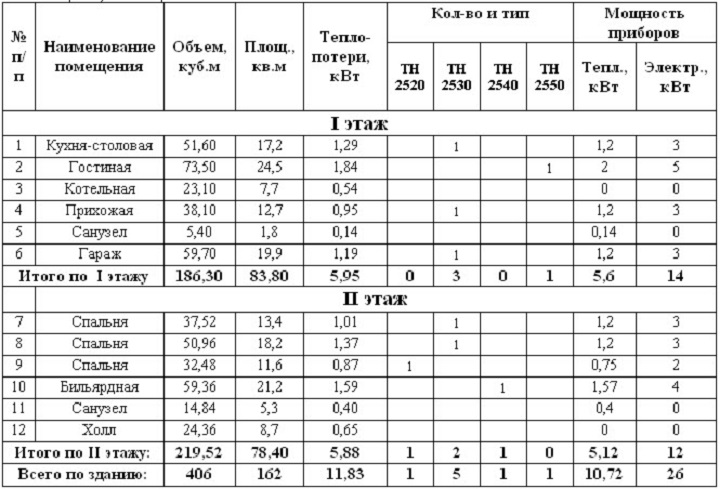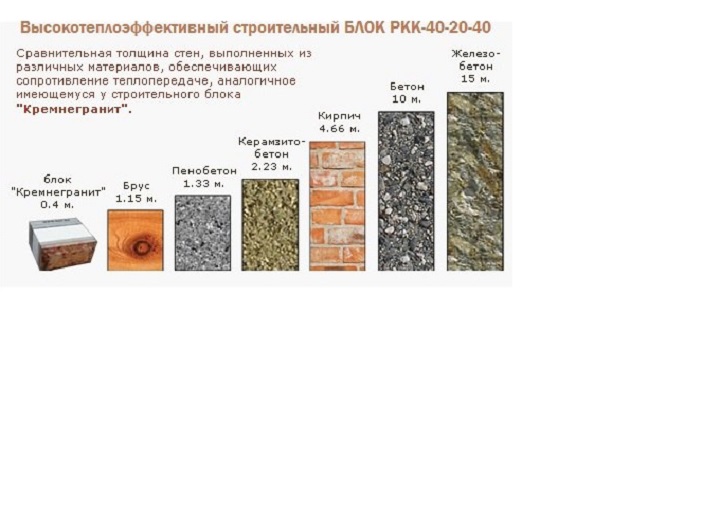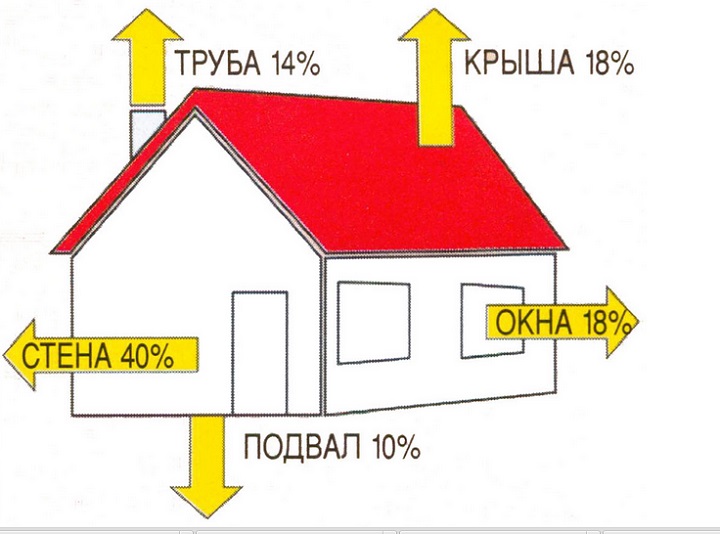Thermal conductivity coefficients of various materials. Comparison of the thermal conductivity of building materials - we study important indicators
Thermal conductivity is the process of energy transfer from the warm part of a material to the cold part of this material (i.e. molecules).
Basic values of thermal conductivity coefficients from SNiP II-3-79* (Appendix 2) and from SP 50.13330.2012 SNiP 23-02-2003.
Thermal conductivity of some (but not all) building materials can vary significantly depending on their humidity. The first value in the table is the dry state value. The second and third values are the thermal conductivity values for operating conditions A and B in accordance with Appendix C to SP 50.13330.2012. Operating conditions depend on the climate of the region and the humidity in the room. Simply put, A is normal “average” use, and B is wet conditions.
| Material | Coefficient of thermal conductivity, W/(m °C) |
||
| Dry | Conditions A ("normal") | Conditions B ("wet") | |
| Expanded polystyrene (PPS) | 0,036 - 0,041 | 0,038 - 0,044 | 0,044 - 0,050 |
| Expanded polystyrene extruded (EPPS, XPS) | 0,029 | 0,030 | 0,031 |
| Woolen felt | 0,045 | ||
| Cement-sand mortar (CPR) | 0,58 | 0,76 | 0,93 |
| Lime-sand mortar | 0,47 | 0,7 | 0,81 |
| Gypsum plaster plain | 0,25 | ||
| Mineral wool stone, 180 kg/m3 | 0,038 | 0,045 | 0,048 |
| Mineral wool stone, 140-175 kg/m3 | 0,037 | 0,043 | 0,046 |
| Mineral wool stone, 80-125 kg/m3 | 0,036 | 0,042 | 0,045 |
| Mineral wool stone, 40-60 kg/m3 | 0,035 | 0,041 | 0,044 |
| Mineral wool stone, 25-50 kg/m3 | 0,036 | 0,042 | 0,045 |
| Mineral wool glass, 85 kg/m3 | 0,044 | 0,046 | 0,05 |
| Mineral wool glass, 75 kg/m3 | 0,04 | 0,042 | 0,047 |
| Mineral wool glass, 60 kg/m3 | 0,038 | 0,04 | 0,045 |
| Mineral wool glass, 45 kg/m3 | 0,039 | 0,041 | 0,045 |
| Mineral wool glass, 35 kg/m3 | 0,039 | 0,041 | 0,046 |
| Mineral wool glass, 30 kg/m3 | 0,04 | 0,042 | 0,046 |
| Mineral wool glass, 20 kg/m3 | 0,04 | 0,043 | 0,048 |
| Mineral wool glass, 17 kg/m3 | 0,044 | 0,047 | 0,053 |
| Mineral wool glass, 15 kg/m3 | 0,046 | 0,049 | 0,055 |
| Foam concrete and aerated concrete on cement binder, 1000 kg/m3 | 0,29 | 0,38 | 0,43 |
| Foam concrete and aerated concrete on cement binder, 800 kg/m3 | 0,21 | 0,33 | 0,37 |
| Foam concrete and aerated concrete on cement binder, 600 kg/m3 | 0,14 | 0,22 | 0,26 |
| Foam concrete and aerated concrete on cement binder, 400 kg/m3 | 0,11 | 0,14 | 0,15 |
| Foam concrete and aerated concrete on limestone binder, 1000 kg/m3 | 0,31 | 0,48 | 0,55 |
| Foam concrete and aerated concrete on limestone binder, 800 kg/m3 | 0,23 | 0,39 | 0,45 |
| Foam concrete and aerated concrete on limestone binder, 600 kg/m3 | 0,15 | 0,28 | 0,34 |
| Foam concrete and aerated concrete on limestone binder, 400 kg/m3 | 0,13 | 0,22 | 0,28 |
| Pine, spruce across the grain | 0,09 | 0,14 | 0,18 |
| Pine, spruce along the grain | 0,18 | 0,29 | 0,35 |
| Oak across the grain | 0,10 | 0,18 | 0,23 |
| Oak along the grain | 0,23 | 0,35 | 0,41 |
| Copper | 382 - 390 | ||
| Aluminum | 202 - 236 | ||
| Brass | 97 - 111 | ||
| Iron | 92 | ||
| Tin | 67 | ||
| Steel | 47 | ||
| Window glass | 0,76 | ||
| fresh snow | 0,10 - 0,15 | ||
| liquid water | 0,56 | ||
| Air (+27 °C, 1 atm) | 0,026 | ||
| Vacuum | 0 | ||
| Argon | 0,0177 | ||
| Xenon | 0,0057 | ||
| Arbolit | 0,07 - 0,17 | ||
| Cork tree | 0,035 | ||
| Reinforced concrete with a density of 2500 kg/m3 | 1,69 | 1,92 | 2,04 |
| Concrete (on gravel or crushed stone) with a density of 2400 kg/m3 | 1,51 | 1,74 | 1,86 |
| Expanded clay concrete with a density of 1800 kg/m3 | 0,66 | 0,80 | 0,92 |
| Expanded clay concrete with a density of 1600 kg/m3 | 0,58 | 0,67 | 0,79 |
| Expanded clay concrete with a density of 1400 kg/m3 | 0,47 | 0,56 | 0,65 |
| Expanded clay concrete with a density of 1200 kg/m3 | 0,36 | 0,44 | 0,52 |
| Expanded clay concrete with a density of 1000 kg/m3 | 0,27 | 0,33 | 0,41 |
| Expanded clay concrete with a density of 800 kg/m3 | 0,21 | 0,24 | 0,31 |
| Expanded clay concrete with a density of 600 kg/m3 | 0,16 | 0,2 | 0,26 |
| Expanded clay concrete with a density of 500 kg/m3 | 0,14 | 0,17 | 0,23 |
| Large format ceramic block (warm ceramic) | 0,14 - 0,18 | ||
| Solid ceramic brick, masonry on the CPR | 0,56 | 0,7 | 0,81 |
| Silicate brick, masonry on the CPR | 0,70 | 0,76 | 0,87 |
| Hollow ceramic brick (density 1400 kg/m3 including voids), masonry on the CPR | 0,47 | 0,58 | 0,64 |
| Hollow ceramic brick (density 1300 kg/m3, including voids), masonry on the CPR | 0,41 | 0,52 | 0,58 |
| Hollow ceramic brick (density 1000 kg/m3, including voids), masonry on the CPR | 0,35 | 0,47 | 0,52 |
| Silicate brick, 11 voids (density 1500 kg / m3), masonry on the CPR | 0,64 | 0,7 | 0,81 |
| Silicate brick, 14 voids (density 1400 kg / m3), masonry on the CPR | 0,52 | 0,64 | 0,76 |
| Granite | 3,49 | 3,49 | 3,49 |
| Marble | 2,91 | 2,91 | 2,91 |
| Limestone, 2000 kg/m3 | 0,93 | 1,16 | 1,28 |
| Limestone, 1800 kg/m3 | 0,7 | 0,93 | 1,05 |
| Limestone, 1600 kg/m3 | 0,58 | 0,73 | 0,81 |
| Limestone, 1400 kg/m3 | 0,49 | 0,56 | 0,58 |
| Tuff, 2000 kg/m3 | 0,76 | 0,93 | 1,05 |
| Tuff, 1800 kg/m3 | 0,56 | 0,7 | 0,81 |
| Tuff, 1600 kg/m3 | 0,41 | 0,52 | 0,64 |
| Tuff, 1400 kg/m3 | 0,33 | 0,43 | 0,52 |
| Tuff, 1200 kg/m3 | 0,27 | 0,35 | 0,41 |
| Tuff, 1000 kg/m3 | 0,21 | 0,24 | 0,29 |
| Dry building sand (GOST 8736-77*), 1600 kg/m3 | 0,35 | ||
| Plywood | 0,12 | 0,15 | 0,18 |
| Chipboard, fiberboard, 1000 kg/m3 | 0,15 | 0,23 | 0,29 |
| Chipboard, fiberboard, 800 kg/m3 | 0,13 | 0,19 | 0,23 |
| Chipboard, fiberboard, 600 kg/m3 | 0,11 | 0,13 | 0,16 |
| Chipboard, fiberboard, 400 kg/m3 | 0,08 | 0,11 | 0,13 |
| Chipboard, fiberboard, 200 kg/m3 | 0,06 | 0,07 | 0,08 |
| Tow | 0,05 | 0,06 | 0,07 |
| Gypsum board (gypsum sheathing sheets), 1050 kg/m3 | 0,15 | 0,34 | 0,36 |
| Gypsum board (gypsum sheathing sheets), 800 kg/m3 | 0,15 | 0,19 | 0,21 |
| PVC linoleum on a heat-insulating substrate, 1800 kg/m3 | 0,38 | 0,38 | 0,38 |
| PVC linoleum on a heat-insulating substrate, 1600 kg/m3 | 0,33 | 0,33 | 0,33 |
| PVC linoleum on fabric backing, 1800 kg/m3 | 0,35 | 0,35 | 0,35 |
| PVC linoleum on fabric backing, 1600 kg/m3 | 0,29 | 0,29 | 0,29 |
| PVC linoleum on fabric backing, 1400 kg/m3 | 0,2 | 0,23 | 0,23 |
| Ecowool | 0,037 - 0,042 | ||
| Expanded perlite, sand, density 75 kg/m3 | 0,043 - 0,047 | ||
| Expanded perlite, sand, density 100 kg/m3 | 0,052 | ||
| Expanded perlite, sand, density 150 kg/m3 | 0,052 - 0,058 | ||
| Expanded perlite, sand, density 200 kg/m3 | 0,07 | ||
| Foam glass, bulk, density 100 - 150 kg/m3 | 0,043 - 0,06 | ||
| Foam glass, bulk, density 151 - 200 kg/m3 | 0,06 - 0,063 | ||
| Foam glass, bulk, density 201 - 250 kg/m3 | 0,066 - 0,073 | ||
| Foam glass, bulk, density 251 - 400 kg/m3 | 0,085 - 0,1 | ||
| Foam glass, blocks, density 100 - 120 kg/m3 | 0,043 - 0,045 | ||
| Foam glass, blocks, density 121 - 170 kg/m3 | 0,05 - 0,062 | ||
| Foam glass, blocks, density 171 - 220 kg/m3 | 0,057 - 0,063 | ||
| Foam glass, blocks, density 221 - 270 kg/m3 | 0,073 | ||
| Expanded clay, gravel, density 250 kg/m3 | 0,099 - 0,1 | 0,11 | 0,12 |
| Expanded clay, gravel, density 300 kg/m3 | 0,108 | 0,12 | 0,13 |
| Expanded clay, gravel, density 350 kg/m3 | 0,115 - 0,12 | 0,125 | 0,14 |
| Expanded clay, gravel, density 400 kg/m3 | 0,12 | 0,13 | 0,145 |
| Expanded clay, gravel, density 450 kg/m3 | 0,13 | 0,14 | 0,155 |
| Expanded clay, gravel, density 500 kg/m3 | 0,14 | 0,15 | 0,165 |
| Expanded clay, gravel, density 600 kg/m3 | 0,14 | 0,17 | 0,19 |
| Expanded clay, gravel, density 800 kg/m3 | 0,18 | ||
| Gypsum boards, density 1350 kg/m3 | 0,35 | 0,50 | 0,56 |
| Gypsum boards, density 1100 kg/m3 | 0,23 | 0,35 | 0,41 |
| Perlite concrete, density 1200 kg/m3 | 0,29 | 0,44 | 0,5 |
| Perlite concrete, density 1000 kg/m3 | 0,22 | 0,33 | 0,38 |
| Perlite concrete, density 800 kg/m3 | 0,16 | 0,27 | 0,33 |
| Perlite concrete, density 600 kg/m3 | 0,12 | 0,19 | 0,23 |
| Polyurethane foam (PPU), density 80 kg/m3 | 0,041 | 0,042 | 0,05 |
| Polyurethane foam (PPU), density 60 kg/m3 | 0,035 | 0,036 | 0,041 |
| Polyurethane foam (PPU), density 40 kg/m3 | 0,029 | 0,031 | 0,04 |
| Cross-linked polyethylene foam | 0,031 - 0,038 | ||
If the material does not have values for conditions A and B in the table, then there are no corresponding values in SP 50.13330.2012 or on the manufacturers' websites, or this does not make sense for this material.
Note the increase in thermal conductivity with humidity conditions.
Calculation of heat loss at home
The house loses heat through the building envelope (walls, windows, roof, foundation), ventilation and sewerage. The main heat losses go through the building envelope - 60-90% of all heat losses.
The calculation of heat loss at home is needed, at a minimum, in order to choose the right boiler. You can also estimate how much money will be spent on heating in the planned house. It is also possible, thanks to calculations, to analyze the financial efficiency of insulation, i.e. understand whether the cost of installing insulation will pay off with fuel savings over the life of the insulation.
Heat loss through building envelopes
| 1) We calculate the resistance to heat transfer of the wall by dividing the thickness of the material by its coefficient of thermal conductivity. For example, if the wall is built of warm ceramics 0.5 m thick with a thermal conductivity coefficient of 0.16 W / (m × ° C), then we divide 0.5 by 0.16: 0.5 m / 0.16 W/(m×°C) = 3.125 m2×°C/W |
| 2) Calculate total area external walls. Here is a simplified example of a square house: (10 m width × 7 m height × 4 sides) - (16 windows × 2.5 m2) = 280 m2 - 40 m2 = 240 m2 |
| 3) We divide the unit by the resistance to heat transfer, thereby obtaining heat loss from one square meter walls by one degree temperature difference. 1 / 3.125 m2×°C/W = 0.32 W/m2×°C |
| 4) Calculate the heat loss of the walls. We multiply the heat loss from one square meter of the wall by the area of the walls and by the temperature difference inside the house and outside. For example, if +25°C inside and -15°C outside, then the difference is 40°C. 0.32 W / m2×°C × 240 m2 × 40 °C = 3072 W This number is the heat loss of the walls. Heat loss is measured in watts, i.e. is the heat dissipation power. |
| 5) In kilowatt-hours it is more convenient to understand the meaning of heat loss. For 1 hour through our walls with a temperature difference of 40 ° C, thermal energy is lost: 3072 W × 1 h = 3.072 kWh Energy spent in 24 hours: 3072 W × 24 h = 73.728 kWh |
It is clear that during the heating period the weather is different, i.e. temperature difference changes all the time. Therefore, in order to calculate the heat loss for the entire heating period, it is necessary in paragraph 4 to multiply by the average temperature difference for all days of the heating period.
For example, for 7 months of the heating period, the average temperature difference between the room and the street was 28 degrees, which means that the heat loss through the walls for these 7 months in kilowatt-hours:
0.32 W / m2×°C × 240 m2 × 28 °C × 7 months × 30 days × 24 h = 10838016 Wh = 10838 kWh
The number is quite "tangible". For example, if the heating was electric, then you can calculate how much money would be spent on heating by multiplying the resulting number by the cost of kWh. You can calculate how much money was spent on gas heating by calculating the cost of kWh of energy from a gas boiler. To do this, you need to know the cost of gas, the calorific value of gas and the efficiency of the boiler.
By the way, in the last calculation, instead of the average temperature difference, the number of months and days (but not hours, we leave the clock), it was possible to use the degree-day of the heating period - GSOP. You can find already calculated GSOPs for different cities of Russia and multiply the heat loss from one square meter by the wall area, by these GSOPs and for 24 hours, getting heat losses in kWh.
Similarly to walls, you need to calculate the heat loss values for windows, front door, roofs, foundations. Then sum everything up and get the value of heat loss through all enclosing structures. For windows, by the way, it will not be necessary to find out the thickness and thermal conductivity, usually there is already a ready-made heat transfer resistance of a double-glazed window calculated by the manufacturer. For the floor (in the case of a slab foundation), the temperature difference will not be too large, the ground under the house is not as cold as the outside air.
Heat loss through ventilation
The approximate volume of available air in the house (the volume of internal walls and furniture is not taken into account):
10 m x 10 m x 7 m = 700 m3
Air density at +20°C 1.2047 kg/m3. The specific heat capacity of air is 1.005 kJ/(kg×°C). Air mass in the house:
700 m3 × 1.2047 kg/m3 = 843.29 kg
Let's say all the air in the house is changed 5 times a day (this is an approximate number). With an average difference between internal and outdoor temperature 28 °C for the entire heating period, on average, heat energy will be spent per day to heat the incoming cold air:
5 × 28 °C × 843.29 kg × 1.005 kJ/(kg×°C) = 118650.903 kJ
118650.903 kJ = 32.96 kWh (1 kWh = 3600 kJ)
Those. during the heating period, with five replacements of air, the house will lose an average of 32.96 kWh of heat energy per day through ventilation. For 7 months of the heating period, energy losses will be:
7 × 30 × 32.96 kWh = 6921.6 kWh
Heat loss through the sewer
During the heating period, the water entering the house is quite cold, for example, it has average temperature+7°C. Water heating is required when residents wash dishes, take baths. Also, the water from the ambient air in the toilet bowl is partially heated. All the heat received by the water is washed off by the residents into the sewer.
Let's say that a family in a house consumes 15 m3 of water per month. The specific heat capacity of water is 4.183 kJ/(kg×°C). The density of water is 1000 kg/m3. Let us assume that on average the water entering the house is heated up to +30°C, i.e. temperature difference 23°C.
Accordingly, per month, heat loss through the sewer will be:
1000 kg/m3 × 15 m3 × 23°C × 4.183 kJ/(kg×°C) = 1443135 kJ
1443135 kJ = 400.87 kWh
For 7 months of the heating period, residents pour into the sewer:
7 × 400.87 kWh = 2806.09 kWh
Conclusion
At the end, you need to add up the received numbers of heat losses through the building envelope, ventilation and sewerage. Get an approximate total number home heat loss.
I must say that heat losses through ventilation and sewerage are quite stable, it is difficult to reduce them. You will not shower less often or poorly ventilate the house. Although partially heat loss through ventilation can be reduced with the help of a heat exchanger.
Calculation of heat loss at home can also be done using SP 50.13330.2012 (updated version of SNiP 23-02-2003). There is an appendix G “Calculation of the specific characteristic of the consumption of thermal energy for heating and ventilation of residential and public buildings”, the calculation itself will be much more complicated, more factors and coefficients are used there.
The thermal conductivity table of building materials is necessary when designing the protection of a building from heat loss in accordance with the SNiP standards of 2003 under the number 23-02. These measures provide a reduction in the operating budget, maintaining a year-round comfortable microclimate indoors. For the convenience of users, all data are summarized in tables, parameters are given for normal operation, conditions of high humidity, since some materials sharply reduce properties with an increase in this parameter.
Thermal conductivity is one of the ways in which heat is lost by living quarters. This characteristic is expressed by the amount of heat that can penetrate a unit area of the material (1 m 2) per second at a standard layer thickness (1 m). Physicists explain the equalization of the temperatures of various bodies, objects through heat conduction by the natural desire for thermodynamic equilibrium of all material substances. Thus, each individual developer, heating the premises in winter, receives losses of thermal energy leaving the dwelling through the outer walls, floors, windows, and roofs. In order to reduce energy consumption for space heating, while maintaining a comfortable microclimate inside them, it is necessary to calculate the thickness of all enclosing structures at the design stage. This will reduce the construction budget. The table of thermal conductivity of building materials allows you to use accurate coefficients for wall structural materials. The SNiP standards regulate the resistance of the facades of the cottage to the transfer of heat to the cold air of the street within 3.2 units. By multiplying these values, you can get the required wall thickness to determine the amount of material. For example, when choosing cellular concrete with a coefficient of 0.12 units, laying in one block 0.4 m long is sufficient. Using cheaper blocks of the same material with a coefficient of 0.16 units, you will need to make the wall thicker - 0.52 m. pine, spruce is 0.18 units. Therefore, in order to comply with the heat transfer resistance condition of 3.2, a 57 cm beam is required, which does not exist in nature. When choosing brickwork with a coefficient of 0.81 unit, the thickness of the outer walls threatens to increase up to 2.6 m, reinforced concrete structures - up to 6.5 m. In practice, walls are made multi-layered, laying a layer of insulation inside or sheathing the outer surface with a heat insulator. These materials have a much lower thermal conductivity coefficient, which makes it possible to reduce the thickness many times over. Structural material ensures the strength of the building, heat insulator reduces heat loss to an acceptable level. Modern facing materials used on facades, internal walls also have resistance to heat loss. Therefore, all layers of future walls are taken into account in the calculations. The above calculations will be inaccurate if you do not take into account the presence of translucent structures in each wall of the cottage. The table of thermal conductivity of building materials in the SNiP standards provides easy access to the thermal conductivity coefficients of these materials.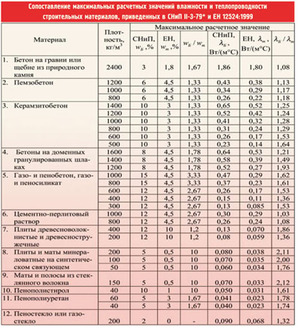
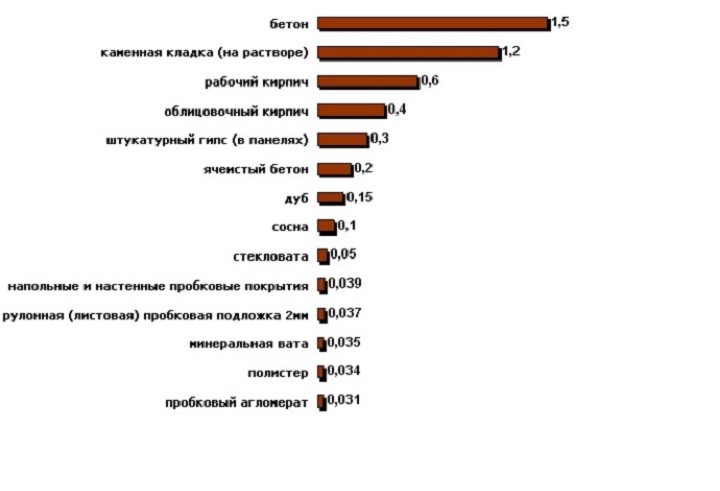

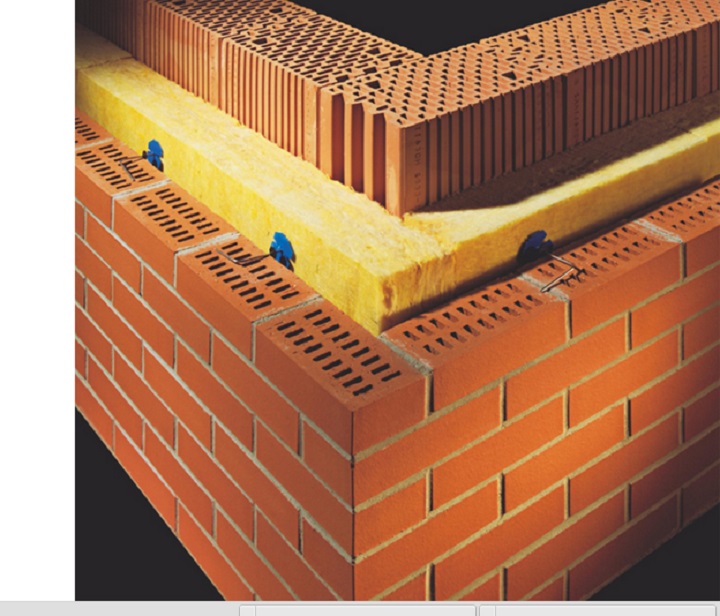
To properly organize the insulation of walls, ceilings and floors of premises, you need to know certain features and properties of materials. The thermal stability of your house directly depends on the qualitative selection of the required values, because if you make a mistake in the initial calculations, you risk making the building insulation inferior. A detailed table of thermal conductivity of building materials, described in this article, is provided to help you.
Thermal conductivity is the quantitative property of substances to transmit heat, which is determined by the coefficient. This indicator is equal to the total amount of heat that passes through a homogeneous material having a unit of length, area and time with a single temperature difference. The SI system converts this value into a thermal conductivity coefficient, which in letter designation looks like this - W / (m * K). Thermal energy is propagated through the material by means of rapidly moving heated particles, which, when colliding with slow and cold particles, transfer some of the heat to them. The better the heated particles are protected from the cold ones, the better the accumulated heat will be retained in the material.

Detailed table of thermal conductivity of building materials
The main feature of heat-insulating materials and building parts is the internal structure and compression ratio of the molecular basis of the raw materials from which the materials are composed. The values of thermal conductivity coefficients for building materials are tabulated below.
| Material type | Thermal conductivity coefficients,
W/(mm*°C) |
||
| Dry | Average heat transfer conditions | High humidity conditions | |
| Polystyrene | 36 — 41 | 38 — 44 | 44 — 50 |
| Extruded polystyrene | 29 | 30 | 31 |
| Felt | 45 | ||
| Mortar cement+sand | 580 | 760 | 930 |
| Lime + sand mortar | 470 | 700 | 810 |
| Gypsum plaster | 250 | ||
| Stone wool 180 kg/m3 | 38 | 45 | 48 |
| 140-175 kg/m3 | 37 | 43 | 46 |
| 80-125 kg/m3 | 36 | 42 | 45 |
| 40-60 kg/m3 | 35 | 41 | 44 |
| 25-50 kg/m3 | 36 | 42 | 45 |
| Glass wool 85 kg / m 3 | 44 | 46 | 50 |
| 75 kg/m3 | 40 | 42 | 47 |
| 60 kg/m 3 | 38 | 40 | 45 |
| 45 kg/m3 | 39 | 41 | 45 |
| 35 kg/m 3 | 39 | 41 | 46 |
| 30 kg/m 3 | 40 | 42 | 46 |
| 20 kg/m 3 | 40 | 43 | 48 |
| 17 kg/m 3 | 44 | 47 | 53 |
| 15 kg/m 3 | 46 | 49 | 55 |
| Foam block and gas block based on cement 1000 kg / m 3 | 290 | 380 | 430 |
| 800 kg/m3 | 210 | 330 | 370 |
| 600 kg/m3 | 140 | 220 | 260 |
| 400 kg/m3 | 110 | 140 | 150 |
| Foam block and gas block on lime 1000 kg / m 3 | 310 | 480 | 550 |
| 800 kg/m3 | 230 | 390 | 450 |
| 400 kg/m3 | 130 | 220 | 280 |
| Pine and spruce wood cut across the grain | 9 | 140 | 180 |
| Pine and spruce wood sawn along the grain | 180 | 290 | 350 |
| Oak wood across the grain | 100 | 180 | 230 |
| Wood oak along the grain | 230 | 350 | 410 |
| Copper | 38200 — 39000 | ||
| Aluminum | 20200 — 23600 | ||
| Brass | 9700 — 11100 | ||
| Iron | 9200 | ||
| Tin | 6700 | ||
| Steel | 4700 | ||
| Glass 3 mm | 760 | ||
| snow layer | 100 — 150 | ||
| Water is normal | 560 | ||
| Medium temperature air | 26 | ||
| Vacuum | 0 | ||
| Argon | 17 | ||
| Xenon | 0,57 | ||
| Arbolit | 7 — 170 | ||
| Cork | 35 | ||
| Reinforced concrete density 2.5 thousand kg / m 3 | 169 | 192 | 204 |
| Concrete on crushed stone with a density of 2.4 thousand kg / m 3 | 151 | 174 | 186 |
| Concrete on expanded clay with a density of 1.8 thousand kg / m 3 | 660 | 800 | 920 |
| Concrete on expanded clay with a density of 1.6 thousand kg / m 3 | 580 | 670 | 790 |
| Concrete on expanded clay with a density of 1.4 thousand kg / m 3 | 470 | 560 | 650 |
| Concrete on expanded clay with a density of 1.2 thousand kg / m 3 | 360 | 440 | 520 |
| Concrete on expanded clay with a density of 1 thousand kg / m 3 | 270 | 330 | 410 |
| Concrete on expanded clay with a density of 800 kg / m 3 | 210 | 240 | 310 |
| Concrete on expanded clay with a density of 600 kg / m 3 | 160 | 200 | 260 |
| Concrete on expanded clay with a density of 500 kg / m 3 | 140 | 170 | 230 |
| Large format ceramic block | 140 — 180 | ||
| dense ceramic brick | 560 | 700 | 810 |
| silicate brick | 700 | 760 | 870 |
| Ceramic brick hollow 1500 kg/m³ | 470 | 580 | 640 |
| Ceramic brick hollow 1300 kg/m³ | 410 | 520 | 580 |
| Ceramic brick hollow 1000 kg/m³ | 350 | 470 | 520 |
| Silicate for 11 holes (density 1500 kg / m 3) | 640 | 700 | 810 |
| Silicate for 14 holes (density 1400 kg / m 3) | 520 | 640 | 760 |
| granite stone | 349 | 349 | 349 |
| marble stone | 2910 | 2910 | 2910 |
| Limestone, 2000 kg/m3 | 930 | 1160 | 1280 |
| Limestone, 1800 kg/m3 | 700 | 930 | 1050 |
| Limestone, 1600 kg/m3 | 580 | 730 | 810 |
| Limestone, 1400 kg/m3 | 490 | 560 | 580 |
| Tyuff 2000 kg/m 3 | 760 | 930 | 1050 |
| Tyuff 1800 kg/m 3 | 560 | 700 | 810 |
| Tyuff 1600 kg/m 3 | 410 | 520 | 640 |
| Tuff 1400 kg/m 3 | 330 | 430 | 520 |
| Tyuff 1200 kg/m 3 | 270 | 350 | 410 |
| Tuff 1000 kg/m 3 | 210 | 240 | 290 |
| Dry sand 1600 kg/m3 | 350 | ||
| Pressed plywood | 120 | 150 | 180 |
| Pressed board 1000 kg/m 3 | 150 | 230 | 290 |
| Pressed board 800 kg/m 3 | 130 | 190 | 230 |
| Pressed board 600 kg/m 3 | 110 | 130 | 160 |
| Pressed board 400 kg/m 3 | 80 | 110 | 130 |
| Pressed board 200 kg/m 3 | 6 | 7 | 8 |
| Tow | 5 | 6 | 7 |
| Drywall (sheathing), 1050 kg / m 3 | 150 | 340 | 360 |
| Drywall (sheathing), 800 kg / m 3 | 150 | 190 | 210 |
| 380 | 380 | 380 | |
| 330 | 330 | 330 | |
| Linoleum on insulation 1800 kg / m 3 | 350 | 350 | 350 |
| Linoleum on insulation 1600 kg / m 3 | 290 | 290 | 290 |
| Linoleum on insulation 1400 kg / m 3 | 200 | 230 | 230 |
| Eco-based cotton wool | 37 — 42 | ||
| Sandy perlite with a density of 75 kg / m 3 | 43 — 47 | ||
| Sandy perlite with a density of 100 kg / m 3 | 52 | ||
| Sandy perlite with a density of 150 kg / m 3 | 52 — 58 | ||
| Sandy perlite with a density of 200 kg / m 3 | 70 | ||
| Foamed glass whose density is 100 - 150 kg / m 3 | 43 — 60 | ||
| Foamed glass whose density is 51 - 200 kg / m 3 | 60 — 63 | ||
| Foamed glass whose density is 201 - 250 kg / m 3 | 66 — 73 | ||
| Foamed glass whose density is 251 - 400 kg / m 3 | 85 — 100 | ||
| Foamed glass in blocks with a density of 100 - 120 kg / m 3 | 43 — 45 | ||
| Foamed glass whose density is 121 - 170 kg / m 3 | 50 — 62 | ||
| Foamed glass whose density is 171 - 220 kg / m 3 | 57 — 63 | ||
| Foamed glass whose density is 221 - 270 kg / m 3 | 73 | ||
| Expanded clay and gravel embankment whose density is 250 kg / m 3 | 99 — 100 | 110 | 120 |
| Expanded clay and gravel embankment whose density is 300 kg / m 3 | 108 | 120 | 130 |
| Expanded clay and gravel embankment whose density is 350 kg / m 3 | 115 — 120 | 125 | 140 |
| Expanded clay and gravel embankment whose density is 400 kg / m 3 | 120 | 130 | 145 |
| Expanded clay and gravel embankment whose density is 450 kg / m 3 | 130 | 140 | 155 |
| Expanded clay and gravel embankment whose density is 500 kg / m 3 | 140 | 150 | 165 |
| Expanded clay and gravel embankment whose density is 600 kg / m 3 | 140 | 170 | 190 |
| Expanded clay and gravel embankment whose density is 800 kg / m 3 | 180 | 180 | 190 |
| Gypsum boards whose density is 1350 kg / m 3 | 350 | 500 | 560 |
| Gypsum boards whose density is 1100 kg / m 3 | 230 | 350 | 410 |
| Perlite concrete whose density is 1200 kg / m 3 | 290 | 440 | 500 |
| MT Perlite concrete whose density is 1000 kg / m 3 | 220 | 330 | 380 |
| Perlite concrete whose density is 800 kg / m 3 | 160 | 270 | 330 |
| Perlite concrete whose density is 600 kg / m 3 | 120 | 190 | 230 |
| Foamed polyurethane whose density is 80 kg / m 3 | 41 | 42 | 50 |
| Foamed polyurethane whose density is 60 kg / m 3 | 35 | 36 | 41 |
| Foamed polyurethane whose density is 40 kg / m 3 | 29 | 31 | 40 |
| Cross-linked polyurethane foam | 31 — 38 | ||
Important! To achieve more effective insulation, you need to compose different materials. Compatibility of surfaces with each other is indicated in the instructions from the manufacturer.
Explanation of indicators in the table of thermal conductivity of materials and insulation: their classification
Depending on the design features the structure to be insulated, the type of insulation is selected. So, for example, if the wall is built of red brick in two rows, then foam plastic 5 cm thick is suitable for full insulation.
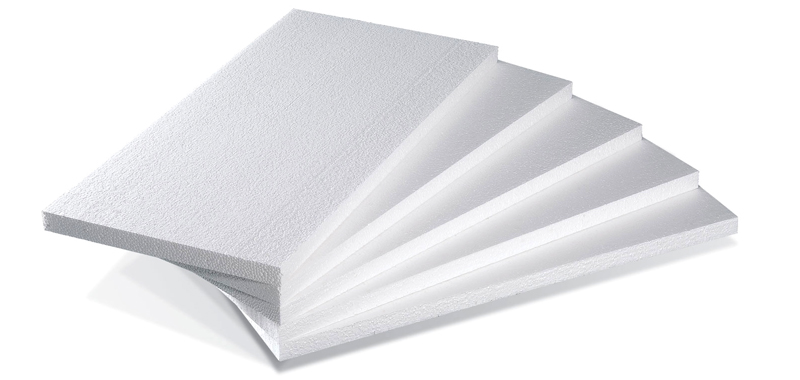
Due to the wide range of densities of foam sheets, they can perfectly insulate walls from OSB and plaster from above, which will also increase the efficiency of the insulation. Thermal insulation classification
According to the method of heat transfer thermal insulation materials are divided into two types:
- Insulation that absorbs any effect of cold, heat, chemical attack, etc.;
- Insulation that can reflect all types of impact on it;
According to the value of the thermal conductivity coefficients of the material from which the insulation is made, it is distinguished by classes:
- A class. Such a heater has the lowest thermal conductivity, the maximum value of which is 0.06 W (m * C);
- B class. It has an average SI parameter and reaches 0.115 W (m*S);
- To class. It is endowed with high thermal conductivity and shows an indicator of 0.175 W (m * C);
Note! Not all heaters are resistant to high temperatures. For example, ecowool, straw, chipboard, fiberboard and peat need reliable protection from external conditions.
The main types of heat transfer coefficients of the material. Table + examples
The calculation of the necessary insulation, if it concerns the external walls of the house, comes from the regional location of the building. To explain clearly how it happens, in the table below, the figures given will relate to the Krasnoyarsk Territory.
| Material type | Heat transfer, W/(m*°C) | Wall thickness, mm | Illustration |
| 3D panels | 5500 | 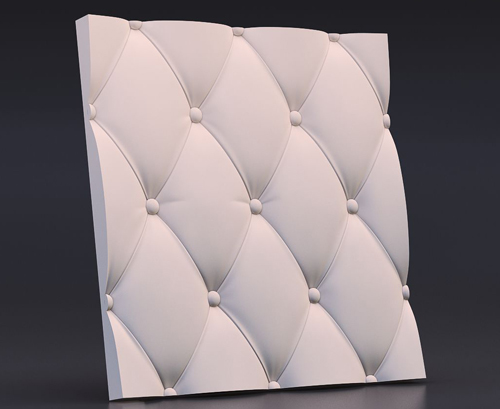 |
|
| Hardwood trees with 15% moisture | 0,15 | 1230 | 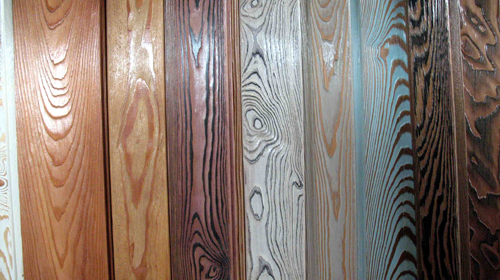 |
| Expanded clay concrete | 0,2 | 1630 | 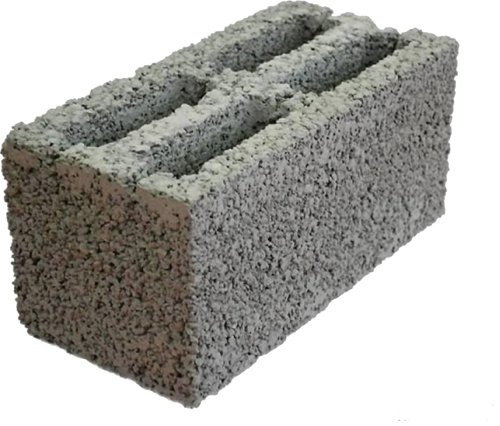 |
| Foam block with a density of 1 thousand kg / m³ | 0,3 | 2450 | 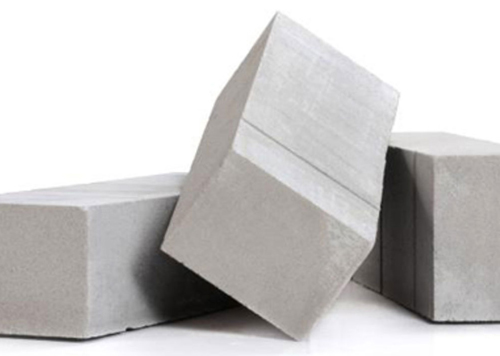 |
| Coniferous trees along the fibers | 0,35 | 2860 | 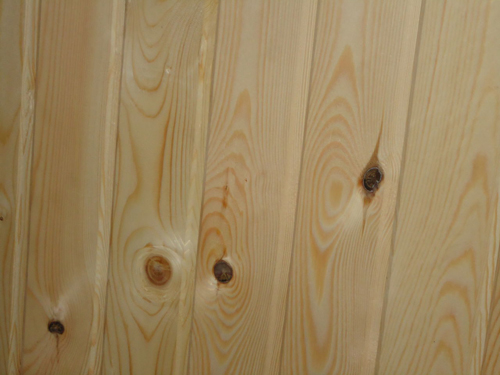 |
| Oak lining | 0,41 | 3350 |  |
| Brick wall on a mortar of cement and sand | 0,87 | 7110 | 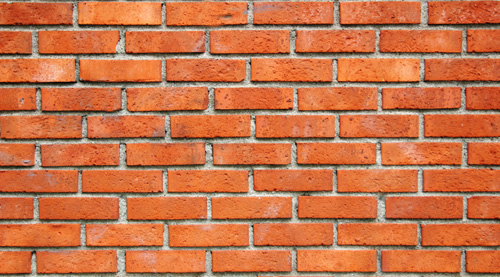 |
| Reinforced concrete floors | 1,7 | 13890 |  |
Each building has different heat transfer resistance materials. The table below, which is an excerpt from the SNiP, clearly demonstrates this.
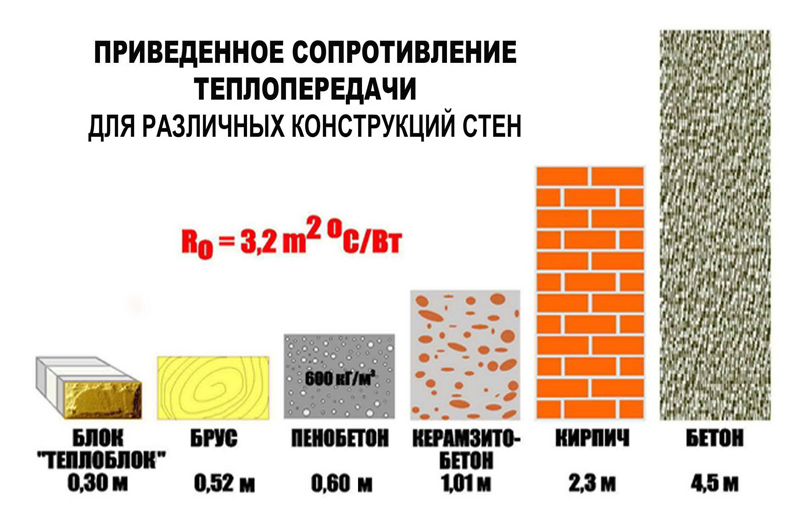
Examples of building insulation depending on thermal conductivity
AT modern construction Walls consisting of two or even three layers of material have become the norm. One layer consists of a heater, which is selected after certain calculations. Additionally, you need to find out where the dew point is.
To organize exact calculation it is necessary to use several SNiPs, GOSTs, manuals and joint ventures in a complex way:
- SNiP 23-02-2003 (SP 50.13330.2012). "Thermal protection of buildings". Edition from 2012;
- SNiP 23-01-99 (SP 131.13330.2012). "Construction climatology". Edition from 2012;
- SP 23-101-2004. "Design of thermal protection of buildings";
- Benefit. E.G. Malyavin “Heat loss of the building. Reference book";
- GOST 30494-96 (replaced by GOST 30494-2011 since 2011). Buildings are residential and public. Indoor microclimate parameters”;
Making calculations according to these documents, determine the thermal features of the building material enclosing the structure, the thermal transfer resistance and the degree of coincidence with normative documents. The calculation parameters based on the thermal conductivity table of the building material are shown in the photo below.
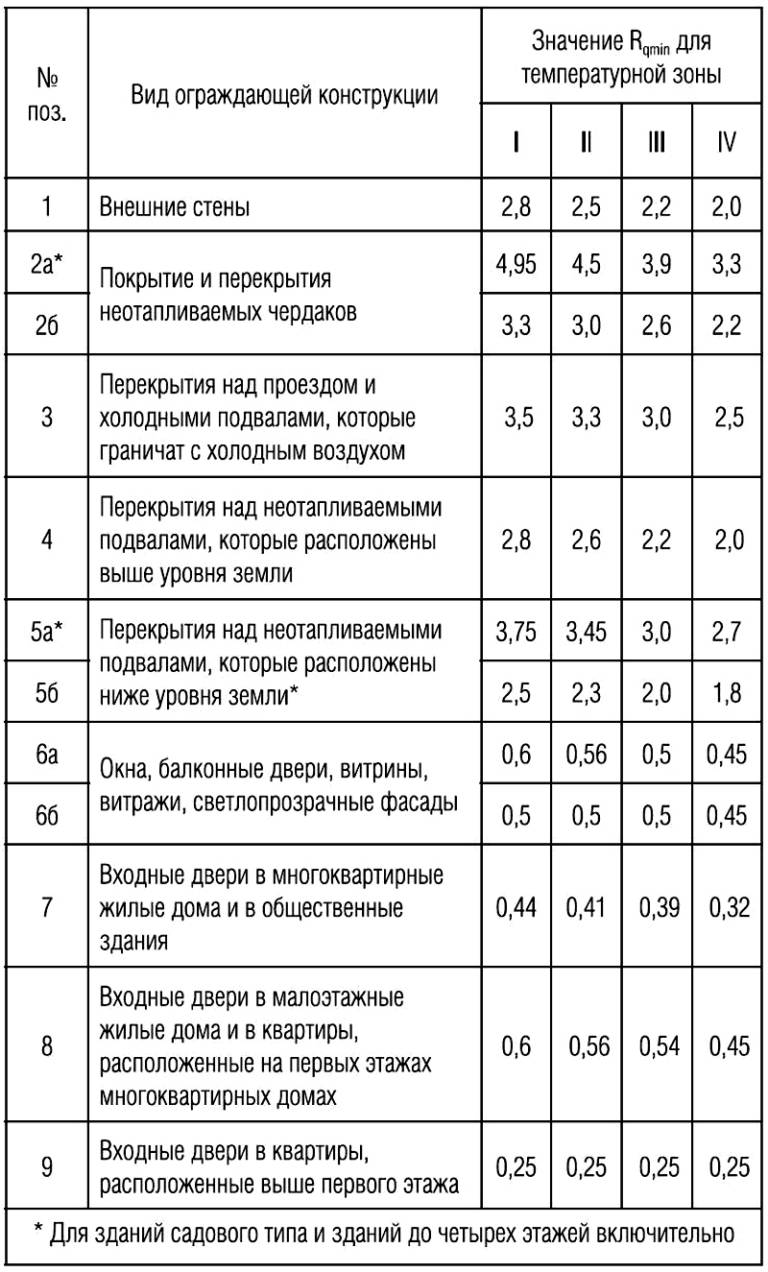
- Do not be lazy to spend time studying the technical literature on the thermal conductivity properties of materials. This step will minimize financial and thermal losses.
- Do not ignore the climate in your area. Information about GOSTs on this matter can be easily found on the Internet.
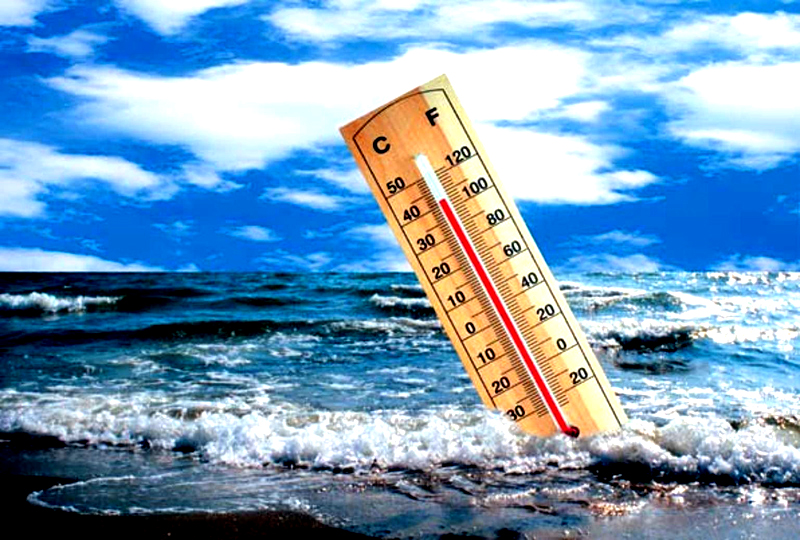
- Before proceeding with the installation of insulation, make sure that the surface of the wall or floor is free of moisture. Otherwise, after a while, mold will form between the surfaces.
- If you plan to mount a non-moisture resistant material on an external wall, take care of the thorough treatment with waterproofing adhesive.
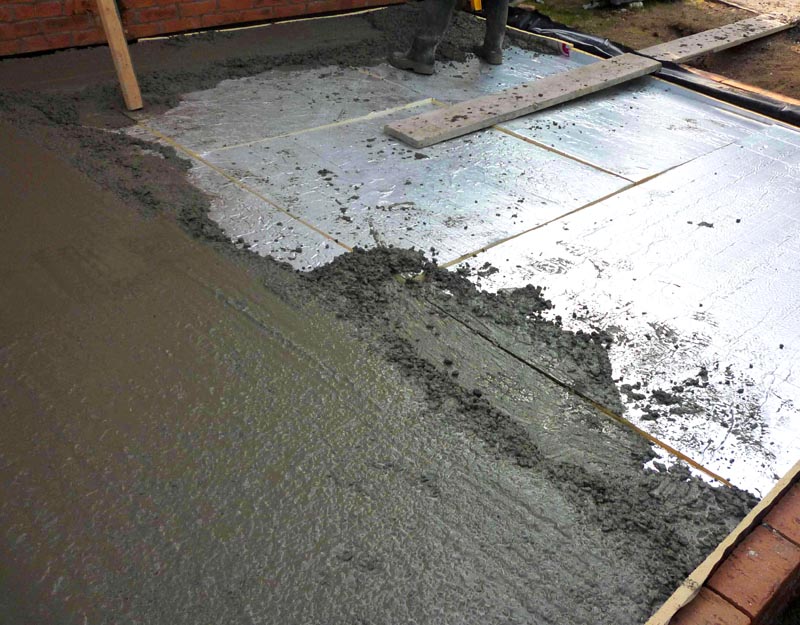
- It is not necessary to produce internal insulation of surfaces with synthetic materials. This will negatively affect your health.
conclusions
With such a variety of various thermal insulations, the thermal conductivity table of building materials will help you to decide the issue with the choice. Warm and comfortable home for you!
Today, the issue of rational use of fuel and energy resources is very acute. Ways to save heat and energy are being continuously worked out in order to ensure the energy security of the development of the economy of both the country and each individual family.
The creation of efficient power plants and thermal insulation systems (equipment that provides the greatest heat exchange (for example, steam boilers) and, conversely, from which it is undesirable (melting furnaces)) is impossible without knowledge of the principles of heat transfer.
Approaches to the thermal protection of buildings have changed, the requirements for building materials have increased. Every house needs insulation and heating system.. Therefore, in the heat engineering calculation of enclosing structures, it is important to calculate the thermal conductivity index.
The concept of thermal conductivity
Thermal conductivity - this is such a physical property of the material, in which the thermal energy inside the body passes from its hottest part to the colder one. The value of the thermal conductivity index shows the degree of heat loss by residential premises. Depends on the following factors:

It is possible to quantify the property of objects to pass thermal energy through the coefficient of thermal conductivity. It is very important to make a competent choice of building materials, insulation to achieve the greatest resistance to heat transfer. Miscalculations or unreasonable savings in the future can lead to a deterioration in the indoor climate, dampness in the building, wet walls, stuffy rooms. And most importantly - to high heating costs.
For comparison, below is a table of thermal conductivity of materials and substances.
Table 1
Metals have the highest values, heat-insulating objects have the lowest.
Classification of building materials and their thermal conductivity
 Thermal conductivity of reinforced concrete, brickwork, expanded clay concrete blocks, commonly used for the construction of enclosing structures, has the highest standard indicators. In the construction industry wooden structures are used much less frequently.
Thermal conductivity of reinforced concrete, brickwork, expanded clay concrete blocks, commonly used for the construction of enclosing structures, has the highest standard indicators. In the construction industry wooden structures are used much less frequently.
Depending on the thermal conductivity values, building materials are divided into classes:
- structural and heat-insulating (from 0.210);
- heat-insulating (up to 0.082 - A, from 0.082 to 0.116 - B, etc.).
Efficiency of sandwich structures
Density and thermal conductivity
Currently, there is no such building material, high load bearing capacity which would be combined with low thermal conductivity. The construction of buildings based on the principle of multilayer structures allows:
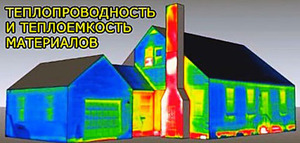
Combination structural material and thermal insulation allows to ensure strength and reduce the loss of thermal energy to an optimal level. Therefore, when designing walls, each layer of the future enclosing structure is taken into account in the calculations.
It is also important to take into account the density when building a house and when it is insulated.
The density of a substance is a factor that affects its thermal conductivity, the ability to retain the main heat insulator - air.
Calculation of wall thickness and insulation
The calculation of the wall thickness depends on the following indicators:
- density;
- calculated thermal conductivity;
- heat transfer resistance coefficient.
According to the established norms, the value of the heat transfer resistance index of the outer walls must be at least 3.2λ W/m °C.
Calculation thickness of walls made of reinforced concrete and other structural materials is presented in table 2. Such building materials are characterized by high load-bearing characteristics, they are durable, but they are ineffective as thermal protection and require irrational wall thickness.
table 2
Structural and heat-insulating materials are capable of being subjected to sufficiently high loads, while significantly increasing the thermal and acoustic properties of buildings in wall enclosing structures (tables 3.1, 3.2).
Table 3.1
Table 3.2
Heat-insulating building materials can significantly increase the thermal protection of buildings and structures. Table 4 shows that the lowest values of the thermal conductivity coefficient have polymers, mineral wool, plates from natural organic and inorganic materials.
Table 4
The values of the tables of thermal conductivity of building materials are used in the calculations:
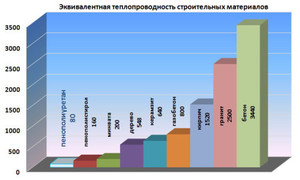
The task of choosing the optimal materials for construction, of course, implies a more integrated approach. However, even such simple calculations already at the first stages of design make it possible to determine the most suitable materials and their quantity.
It is better to start the construction of each object with the planning of the project and careful calculation of thermal parameters. Accurate data will allow you to get a table of thermal conductivity of building materials. Proper construction of buildings contributes to optimal climatic parameters in the room. And the table will help you choose the right raw materials that will be used for construction.
Purpose of thermal conductivity
Thermal conductivity is a measure of the transfer of heat energy from heated objects in a room to objects with a lower temperature. The heat exchange process is carried out until the temperature indicators are equalized. To designate thermal energy, a special coefficient of thermal conductivity of building materials is used. The table will help you see all the required values. The parameter indicates how much heat energy is passed through a unit area per unit time. The larger this designation, the better the heat transfer will be. When erecting buildings, it is necessary to use a material with a minimum value of thermal conductivity.
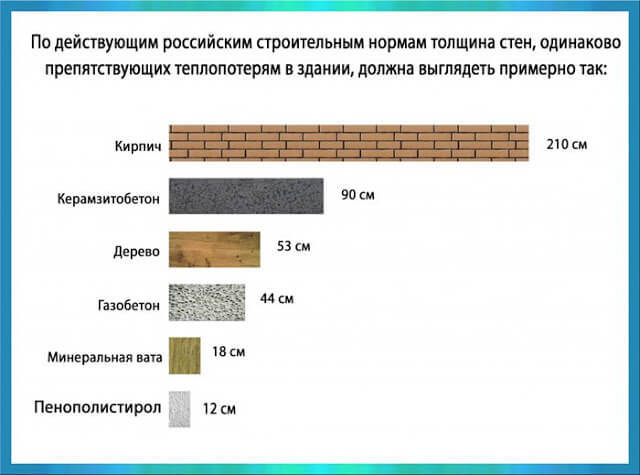
The thermal conductivity coefficient is a value that is equal to the amount of heat passing through a meter of material thickness per hour. The use of such a characteristic is necessary to create the best thermal insulation. Thermal conductivity should be taken into account when selecting additional insulating structures.
What affects the thermal conductivity?
Thermal conductivity is determined by such factors:
Porosity determines the heterogeneity of the structure. When heat is passed through such materials, the cooling process is negligible;
An increased density value affects the close contact of the particles, which contributes to faster heat transfer;
High humidity increases this indicator.
Using the values of the thermal conductivity coefficient in practice.
Materials are represented by structural and heat-insulating varieties. The first type has high thermal conductivity. They are used for the construction of ceilings, fences and walls.
With the help of the table, the possibilities of their heat transfer are determined. In order for this indicator to be low enough for a normal indoor microclimate, walls made of some materials must be especially thick. To avoid this, it is recommended to use additional heat-insulating components.
Thermal conductivity indicators for finished buildings. Types of insulation.
When creating a project, all methods of heat leakage must be taken into account. It can exit through walls and roofs, as well as through floors and doors. If you do the design calculations incorrectly, you will have to be content with only the thermal energy received from the heating devices. Buildings built from standard raw materials: stone, brick or concrete need to be additionally insulated.
Additional thermal insulation is carried out in frame buildings. At the same time, the wooden frame gives rigidity to the structure, and the insulating material is laid in the space between the uprights. In buildings made of bricks and cinder blocks, insulation is carried out outside the structure.
When choosing heaters, it is necessary to pay attention to such factors as the level of humidity, the effect of elevated temperatures and the type of structure. Consider certain parameters of insulating structures:
The thermal conductivity index affects the quality of the heat-insulating process;
Moisture absorption has great importance when insulating external elements;
Thickness affects the reliability of insulation. Thin insulation helps to save the useful area of the room;
Flammability is important. High-quality raw materials have the ability to self-extinguish;
Thermal stability reflects the ability to withstand temperature changes;
Environmental friendliness and safety;
Soundproofing protects against noise.
The following types are used as heaters:
Mineral wool is fire resistant and environmentally friendly. To important features refers to low thermal conductivity;
Styrofoam is a lightweight material with good insulating properties. It is easy to install and is moisture resistant. Recommended for use in non-residential buildings;
Basalt wool, unlike mineral wool, is distinguished by the best indicators of resistance to moisture;
Penoplex is resistant to moisture, high temperatures and fire. It has excellent thermal conductivity, easy to install and durable;
Polyurethane foam is known for such qualities as incombustibility, good water repellency and high fire resistance;
Extruded polystyrene foam undergoes additional processing during production. Has a uniform structure;
Penofol is a multilayer insulating layer. Contains polyethylene foam. The surface of the plate is covered with foil to provide reflection.
Bulk types of raw materials can be used for thermal insulation. These are paper granules or perlite. They are resistant to moisture and fire. And from organic varieties, you can consider wood fiber, linen or cork. When choosing, pay special attention to such indicators as environmental friendliness and fire safety.
NOTE! When designing thermal insulation, it is important to consider the installation of a waterproofing layer. This will avoid high humidity and increase resistance to heat transfer.
Table of thermal conductivity of building materials: features of indicators.
The table of thermal conductivity of building materials contains indicators of various types of raw materials that are used in construction. Using this information, you can easily calculate the thickness of the walls and the amount of insulation.
How to use the table of thermal conductivity of materials and heaters?
The heat transfer resistance table of materials shows the most popular materials. When choosing a particular option for thermal insulation, it is important to consider not only physical properties, but also such characteristics as durability, price and ease of installation.
Did you know that the easiest way is to install penooizol and polyurethane foam. They are distributed over the surface in the form of foam. Such materials easily fill the cavities of structures. When comparing solid and foam options, it should be noted that the foam does not form joints.
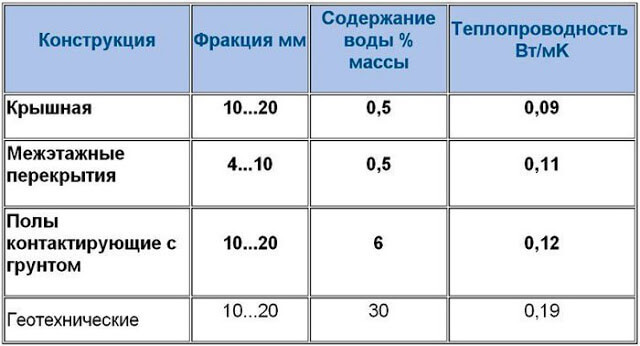
The values of the heat transfer coefficients of materials in the table.
When making calculations, you should know the coefficient of resistance to heat transfer. This value is the ratio of temperatures on both sides to the amount of heat flow. In order to find the thermal resistance of certain walls, a thermal conductivity table is used.
You can do all the calculations yourself. For this, the thickness of the heat insulator layer is divided by the thermal conductivity coefficient. This value is often indicated on the packaging if it is insulation. Household materials are self-measured. This applies to thickness, and the coefficients can be found in special tables.
The resistance coefficient helps to choose a certain type of thermal insulation and the thickness of the material layer. Information on vapor permeability and density can be found in the table.
With the correct use of tabular data, you can choose high-quality material to create a favorable indoor climate. published

